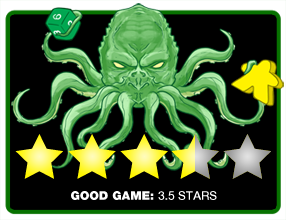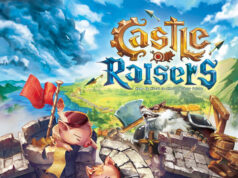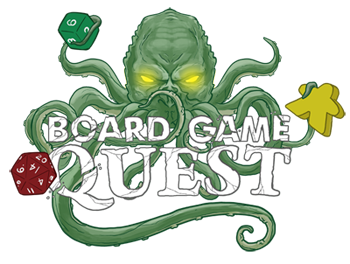 As someone who finds joy in travel and the energy of urban landscapes—whether exploring big cities for arts and culture or strolls through urban parks—Cities felt like a natural pick. This board game invites players to imagine themselves as neighborhood planners, shaping the layout of major metropolises like New York, Lisbon, and Sydney while chasing various goals and maximizing efficiency. I’m also a puzzle fan at heart, so a game that offers layered scoring and strategic placement will always catch my eye.
As someone who finds joy in travel and the energy of urban landscapes—whether exploring big cities for arts and culture or strolls through urban parks—Cities felt like a natural pick. This board game invites players to imagine themselves as neighborhood planners, shaping the layout of major metropolises like New York, Lisbon, and Sydney while chasing various goals and maximizing efficiency. I’m also a puzzle fan at heart, so a game that offers layered scoring and strategic placement will always catch my eye.
Cities, designed by Steve Finn and Phil Walker-Harding and published by Devir Games, positions itself as a medium-weight game that’s easy to get to the table. With artwork by Jorge Tabanera, the question becomes: how well does Cities deliver on theme, strategy, and player experience?
Gameplay Overview:
In Cities, players take on the role of urban developers building out their own neighborhood in a major city. The game’s core mechanics revolve around tile-laying and worker placement, creating a system that feels familiar. Each game features unique goals tied to the chosen city—New York, for example, rewards players for prioritizing park space or building long blocks of continuous structures. Mexico City rewards multiple small buildings in homage to its historic center, while Venice prizes end-to-end water like its iconic canals.
The game is played over 8 rounds (4 if playing with 2 players), with players collecting resources and placing tiles or city features onto their personal neighborhoods. Multiple scoring opportunities arise throughout, and much of the endgame hinges on the player’s ability to manage both city-specific and individual objectives. Rather than following a single path to victory, players must balance immediate gains with long-term strategy, adapting their approach based on the specific neighborhood they’re developing. The game can be completed in under an hour once players are familiar with the rules.

Game Experience
The most charming part of Cities is its promise of discovery. Each city board is vibrant, colorful, and visually distinct. Jorge Tabanera’s artwork immediately draws the eye, creating city boards that feel inviting and distinctive. That said, the overall board can feel a little too “busy.” There’s a visual overload at times that makes it harder to quickly parse your options, especially for newer players. Then again, perhaps it’s a reflection of the big cities themselves.
Theme-wise, the connection between mechanics and city-building is present, but it doesn’t always feel cohesive. You can see what the designers were going for—each city having specific goals tied to its real-world identity—but the actual mechanics don’t always reinforce the feeling of building a living, breathing city. The theme is more of a frame than a full immersion, providing enough context to make decisions feel meaningful without creating true urban planning immersion.

Strategically, the game offers a solid balance of light planning and tactical adjustment. Planning ahead for the end game points that are both known at the start and as play develops sets up win scenarios for players more adept at both long-term strategy and turn-by-turn pivots. There is, however, a noticeable advantage for those who are naturally skilled at this style of play. In my gaming groups, I know exactly who has the advantage, and that predictability makes it slightly less enjoyable for the rest of us. Consider how you might address this when playing with a mixed group of casual and more serious gamers.
Luck plays a modest role—enough to keep things interesting without making the game feel arbitrary. Resource scarcity ramps up tension in higher player counts, as more people compete for the same objectives and tracks. But in two-player games, this tension softens considerably, giving room for more casual, heads-down play or friendly competition, depending on the group’s vibe. The abundance of choices without corresponding scarcity can make decisions feel less consequential in smaller player counts.

The competitive nature of Cities feels indirect. While players are certainly competing for resources and occasionally defensive approaches may help set up a win, the game avoids the aggressive confrontation that characterizes many strategic games. This makes it an excellent choice for groups that prefer strategic depth without cutthroat competition.
At the end of the game, the victory point track feels redundant; a task which could easily be accomplished with pen and paper. I’ve not played a game yet where at least one of us didn’t lap the board.
Cities doesn’t quite achieve the cohesive excellence that would make it a must-have addition to any collection. I’m glad to have it in my collection, but I find myself thinking it’s a game that would be equally at home on someone else’s shelf or available for pickup play during open gaming sessions.
Final Thoughts:
It’s a fun, approachable game that slots nicely into a casual game night lineup and succeeds in its modest ambitions while revealing some limitations that prevent it from achieving greatness.
For players seeking an approachable city-building experience that doesn’t outstay its welcome, Cities delivers exactly what it promises. It may not revolutionize the genre, but it provides a solid, enjoyable experience that will appeal to a broad range of players who appreciate puzzles and city-themed strategy games without needing deeply immersive mechanics.
Final Score: 3.5 Stars – fun and approachable bridge game delivering light strategic puzzle experience.
 Hits:
Hits:
• Friendly competition without aggressive conflict
• Multiple cities provide variable goals and excellent replayability
• Accessible gameplay that’s easy to teach and learn
Misses:
• Victory point track feels redundant
• Certain players may dominate consistently due to puzzle-solving advantage
• Limited long-term strategic depth compared to heavier alternatives






















